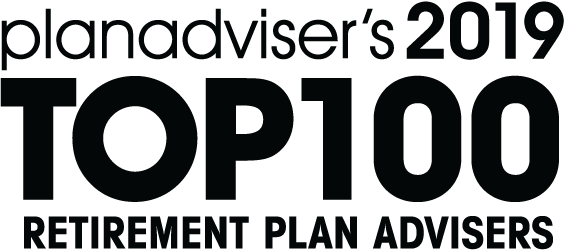The Employee Retirement Income Security Act of 1974 (ERISA) sets forth the requirements under which defined contribution plans, such as 401(k)s and 403(b)s, must be managed for the benefit of the plan participants. The catch-word that has been the subject of various lawsuits is fiduciary responsibility. Employers and plan sponsors who have not taken the proper steps to mitigate their liability with respect to the provisions of Section 404(a) of ERISA run the potential for drawn out litigation and the financial risk associated with failing to adhere to the “Prudent Person Rule.” This requirement may cause you to consider whether you wish to continue to assume the role of a Section 3(21) plan fiduciary or outsource investment oversight to a Section 3(38) investment manager.
Five Ways to Effectively Promote Employee Financial Wellness
Research from Northwestern Mutual’s Planning & Progress Study revealed that a solid third of all American adults have less than $5,000 put aside for their golden years. One of the biggest contributing factors to this low retirement savings rate is the lack of financial knowledge and general practice of saving, budgeting and investing. According to the American Psychological Association, money is reported to be a top source of significant stress among Americans. When people struggle to save for short-term emergencies, they’re unlikely to prioritize saving for retirement—which, for many, is an amorphous concept that may be decades away. Without education on how to avoid debt, select investments, or prioritize saving for retirement, employees may feel ill-suited to make their own investment decisions, even when it comes to taking advantage of the employer match. As a result, employers who promote employee financial wellness on a holistic basis are far more likely to see increased participation in workplace benefit programs.
Best Practices for Your OCIO Search
For generations, successful endowments, foundations, and non-profits used in-house chief investment officers (CIOs) to direct their investment programs. But in today’s market, this approach has become challenged by the complexity of available asset solutions and limitations of resources. The Outsourced Chief Investment Officer (“OCIO”) model has become a way of life to many endowments and foundations globally, and many boards have found that outsourcing the CIO role provides them with far more flexibility and a higher level of skill at a lower cost. We have outlined the best practices for conducting an OCIO search.
What’s Your Fee Policy?
According to the Callan Institute, an employee benefits research and investment consultancy group, the issue of high concern for defined contribution plan sponsors is that of retirement plan fees. Specifically noted in Callan’s 2019 Defined Contribution Trends Survey, plan sponsors have identified for the third year in a row that improvements in their fiduciary standing comes from a robust and thorough review of retirement plan fees.
PlanPILOT Named to 2019 PLANADVISER Top 100 Retirement Plan Advisers
CHICAGO, IL – February 18, 2019 – PlanPILOT is pleased to announce it has been named as one of the 2019 PLANADVISER Top 100 Retirement Plan Advisers.
 The PLANADVISER Top 100 Retirement Plan Advisers is an annual listing of adviser individuals and teams that stand out in the industry in terms of a series of quantitative measures. These include the dollar value of qualified plan assets under administration (AUA), as well as the number of plans under advisement.
The PLANADVISER Top 100 Retirement Plan Advisers is an annual listing of adviser individuals and teams that stand out in the industry in terms of a series of quantitative measures. These include the dollar value of qualified plan assets under administration (AUA), as well as the number of plans under advisement.
PlanPILOT was recognized in the “Small Teams With $1.8 Billion or More in Retirement Plan Assets Under Advisement” and “Small Teams With 115 Retirement Plans or More Under Advisement” categories.
- « Previous Page
- 1
- …
- 19
- 20
- 21
- 22
- 23
- …
- 35
- Next Page »




